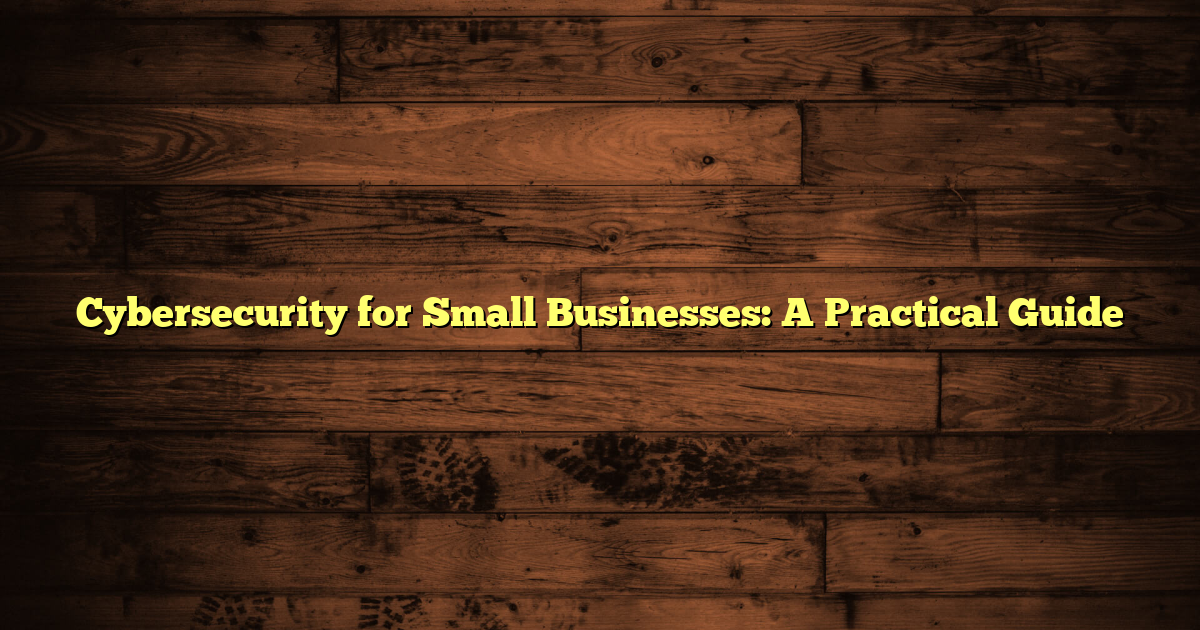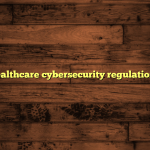Cybersecurity for Small Businesses: A Practical Guide
Table of Contents:
Why Small Businesses Need a Cyber Security Policy
What Should Be in Your Cyber Security Policy?
How Do You Actually Write One?
Common Threats Facing Small Businesses
Practical Steps Any Business Can Take Today
FAQ
Cybersecurity for Small Businesses: A Practical Guide
Is your small business a sitting duck for cyberattacks? Unfortunately, small businesses are appealing targets for cybercriminals because they often lack the robust defenses of larger corporations. This is how to create a practical cybersecurity policy without technical jargon, sales pitches, or emptying your wallet.
Why Small Businesses Need a Cyber Security Policy
A cybersecurity policy is simply your business’s guide for keeping your digital information secure. It details the specific actions that every person within your business must take to safeguard sensitive information from hackers, scams, as well as other online threats. In that respect, it’s similar to locking your doors each night. It protects your customer information, your financial records, next to anything else which could hurt your business if unauthorized individuals gained access.
Small businesses are susceptible because they frequently lack large IT departments or big budgets for advanced security programs.
However, implementing fundamental steps is able to significantly impact your security. For instance, enabling multi-factor authentication (MFA), frequently updating your software, along with creating backups of important files are straightforward actions which are able to halt many common attacks.
What Should Be in Your Cyber Security Policy?
Your policy does not have to be intricate. As a matter of fact, its simplicity will increase the chances of it being followed by your team. These are some necessary elements:
- Employee Training – Show your employees how to recognize phishing emails including suspicious links. The majority of breaches occur when an individual clicks something they shouldn’t.
- Password Rules – Ask for the use of passwords that are complex or passphrases that are longer. Make it standard procedure to change passwords at a reasonable cadence.
- Multi-Factor Authentication – Switch this setting on everywhere that it is a possibility to prevent people from accessing accounts without another form of verification.
- Software Updates – Make sure all software stays updated. Keeping software current denies hackers the means of exploiting vulnerabilities.
- Backups – Make copies of important data regularly to permit recovery quickly when issues arise.
- Access Controls – Offer employees permissions restricted to only the tools/data they need for their work responsibilities.
- Incident Response Plan – A plan is necessary should there be an attack. Make sure everyone understands who must be contacted, also be prepared with the actions that have to be taken immediately.
The guidelines above represent the crucial items most small businesses need.
How Do You Actually Write One?
You don’t have to start writing your policy from nothing. Free online tools are designed for small businesses. The FCC’s Small Biz Cyber Planner 2.0 is one example, in addition, government agencies like DHS (Department of Homeland Security) or Australia’s ACSC (Australian Cyber Security Centre) offer useful information. These platforms guide users in making tailored plans that fit particular needs. Consider this strategy:
- Assess Your Risks
- Determine which categories of data you process (for example, customer details or payment data) and where you store that information.
- Spot the weak points. Are your team members using their own devices? Do employees work remotely often?
- Set Clear Rules
- List who has rights to access data and systems.
- Write policies for passwords and device utilization.
- Train Everyone
- Arrange regular coaching to underscore the significance of cybersecurity.
- Keep It Updated
- Audit your policy on a yearly basis, or whenever your business changes significantly.
Remember that striving to attain gradual enhancements in protection is preferable to demanding flawless cybersecurity.
Common Threats Facing Small Businesses
A clearer comprehension of the threats that businesses face can help in shaping good policies:
- Phishing & Scam Messages – Deceptive emails posing as trusted entities with the motive of tricking users into revealing passwords or loading malicious software.
- Malicious Software (Malware) – Viruses or ransomware hold files hostage to extract payment. Those nefarious programs often get transferred via dubious downloads including email attachments.
- Weak Passwords & Shared Accounts – Passwords that are simple to guess give attackers easy admission to accounts. Should multiple people use identical accounts, responsibility cannot be pinpointed if an event occurs.
Most attacks utilize human error rather than utilizing state-of-the-art technology.
Practical Steps Any Business Can Take Today
Is it possible to implement some cybersecurity improvements immediately without spending a fortune? These are simple actions that most small business owners are capable of taking right away:
- Activate multi-factor authentication on all accounts and applications.
- Install updates on all devices as well as software regularly.
- Keep copies of essential information stored separately, including test restorations frequently.
- Show employees how to spot deceptive tricks along with phishing attempts.
- Use strong passwords in addition to passphrases instead of weak choices.
Following those steps stops many common attacks from ever succeeding.
Consider owning a coffee shop wherein customers use cards whose details have been saved along with the rewards program data. If your system gets compromised by inadequate password controls, customers’ financial information could get posted on dark web forums, damaging your shop’s image while posing potential legal problems. Basic protections aren’t implemented quickly enough – unfortunately, this situation happens too often. Fortunately, developing secure defenses doesn’t require vast funding, nor hours of tedious studying. Sticking to straightforward instructions published by impartial professionals can bring advantages during the short term coupled with the long term. For example: When a new person joins your company, quickly instruct them to be wary about clicking questionable web links contained within emails requesting instant activity concerning payroll. Additionally, teach them how to create a protected login, combining letters with numbers and symbols. Then turn on multi-factor authentication anywhere that it’s available, since extra protection can safeguard even those individuals who are too impatient to prioritize their own safety! Additionally, take care of used tablets, laptops, including smartphones used within everyday operations. Be certain to totally erase everything, including concealed folders having cached logins, along with browsing history and saved documentation before selling, donating, or recycling those tools. If that’s not done, the next individual utilizing the system could by chance discover confidential data like client lists, invoices, together with contracts. When drafting agreements, think about adding conditions mandating that vendors, partners, also suppliers respect comparable standards regarding privacy, most notably when exchanging sensitive files over the internet to facilitate joint projects as well as collaboration. All illustrations emphasize doable ways to instill responsibility alongside security awareness within the company, instead of considering cybersecurity a purely technical duty assigned primarily to the IT office.
Keep in mind that simplicity, together with consistency also communication across an organization, no matter its dimension, industrial focus or location, are important considerations for developing effective cybersecurity policies. Concentrating on doable solutions backed by authoritative recommendations, as opposed to chasing marketing buzzwords, gives anyone the ability to stay away from the worst results connected with contemporary digital perils lying in wait for unsuspecting people. Consequently, setting aside time to formulate an intelligent approach for managing potential risk is beneficial whether operating a bakery, bookstore, garage startup, or consultancy company.
Summary Table: Key Elements of Small Business Cybersecurity Policy
| Element | Description |
| Employee Training | Regular sessions on recognizing scams/phishing |
| Password Management | Passwords that are strong also passphrases – change regularly |
| Multi-Factor Auth | Activate Multi-Factor Authentication when available |
| Software Updates | Devices and software updated regularly |
| Backups | Perform backups regularly and test them |
| Access Controls | Access limited to job requirements |
| Incident Response Plan | Action steps, as well as who to contact during breaches |
Every small business needs to tailor its cybersecurity approach according to unique demands they face regularly. Following those fundamentals reduces the odds of becoming a victim, allowing businesses to concentrate on growing a successful company instead of constantly worrying about possible emergencies.
FAQ
What is multi-factor authentication (MFA) and why is it important?
MFA adds an additional layer of security to your accounts. Even if someone gets your password, they’ll also need a second verification method, like a code sent to your phone. This makes it much harder for attackers to access your accounts.
How often should I update my cybersecurity policy?
Review it at least once a year, but also any time there are significant changes to your business operations, such as new software, remote work policies, or changes in the threat environment.
Where can I find free resources to help me create a cybersecurity policy?
Several government agencies and organizations offer free resources, including the FCC’s Small Biz Cyber Planner 2.0, guides from the Department of Homeland Security, next to the Australian Cyber Security Centre (ACSC).
Resources & References:
- https://www.sba.gov/business-guide/manage-your-business/strengthen-your-cybersecurity
- https://www.cynet.com/cybersecurity/creating-your-cyber-security-policy-ultimate-guide/
- https://cybersecurityguide.org/resources/small-business/
- https://www.esecurityplanet.com/networks/cybersecurity-for-small-businesses-guide/
- https://www.cyber.gov.au/sites/default/files/2025-01/ACSC_Small_business_cyber_security_guide_January_2025.pdf





